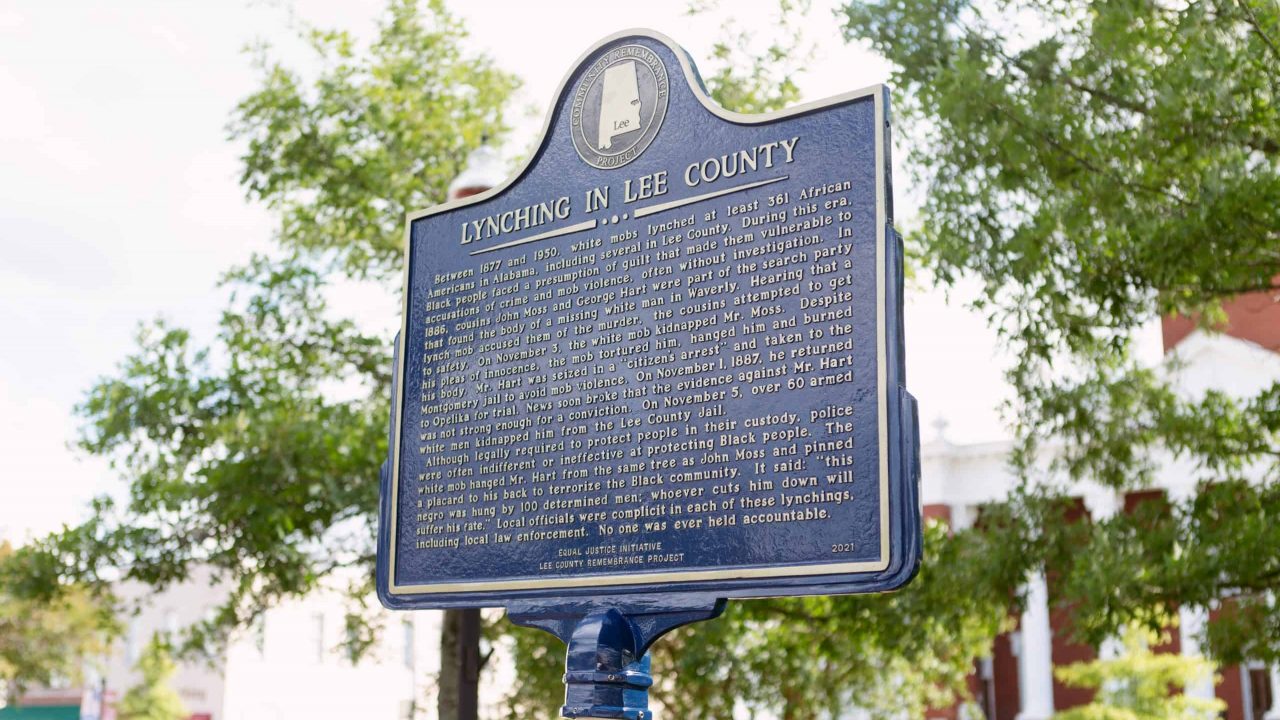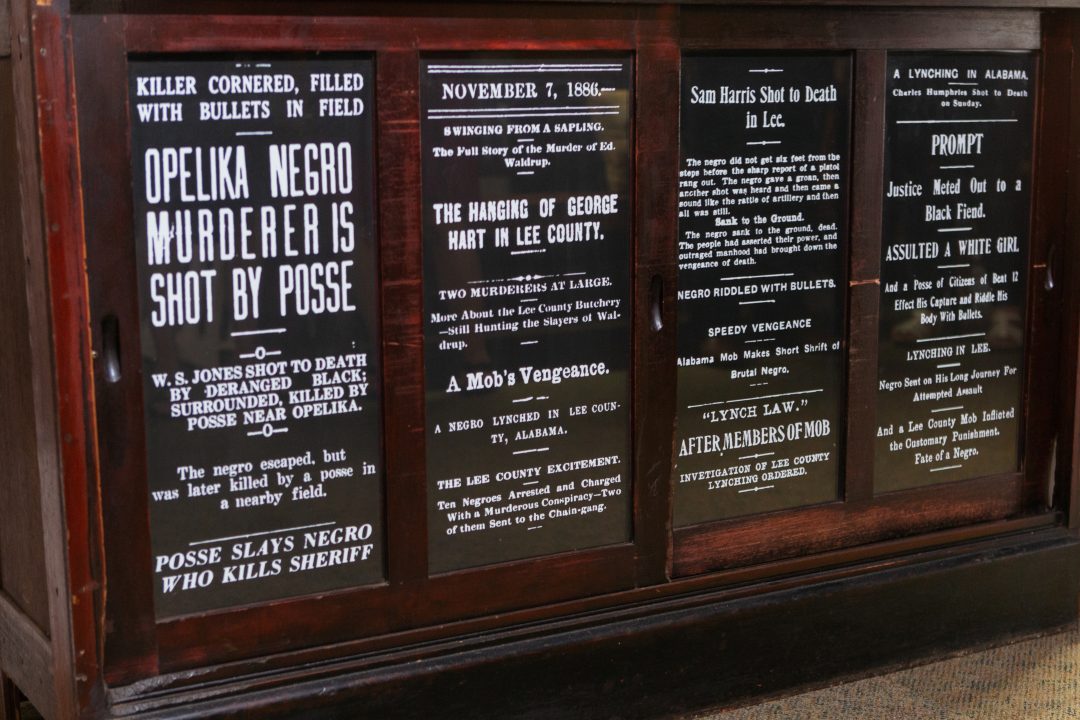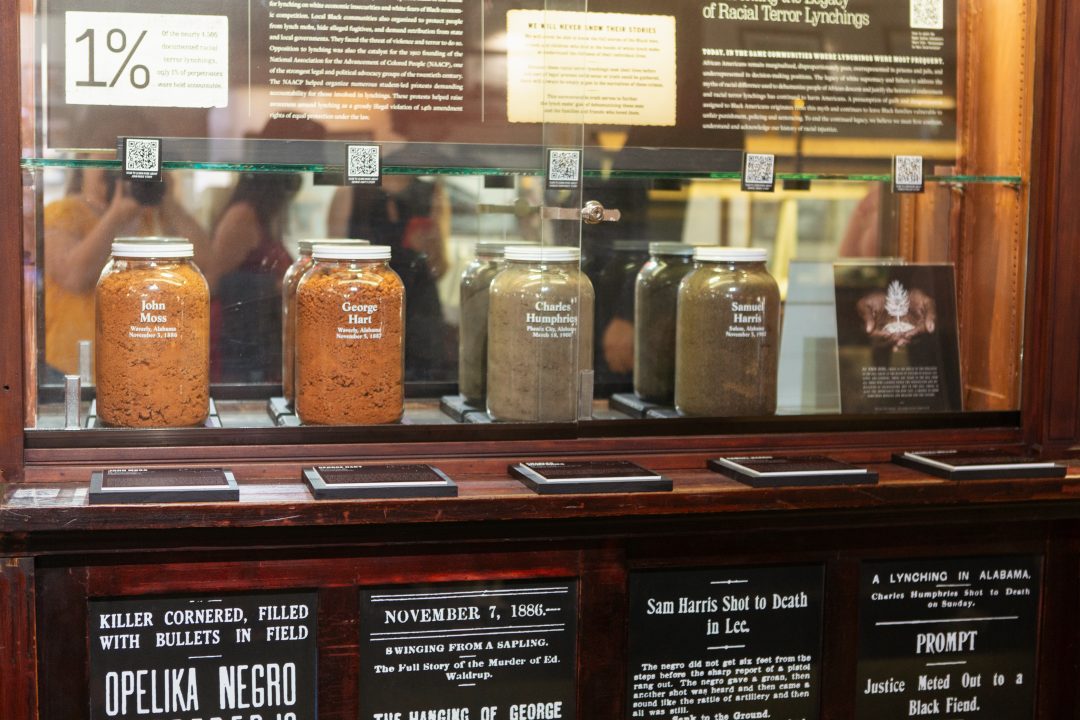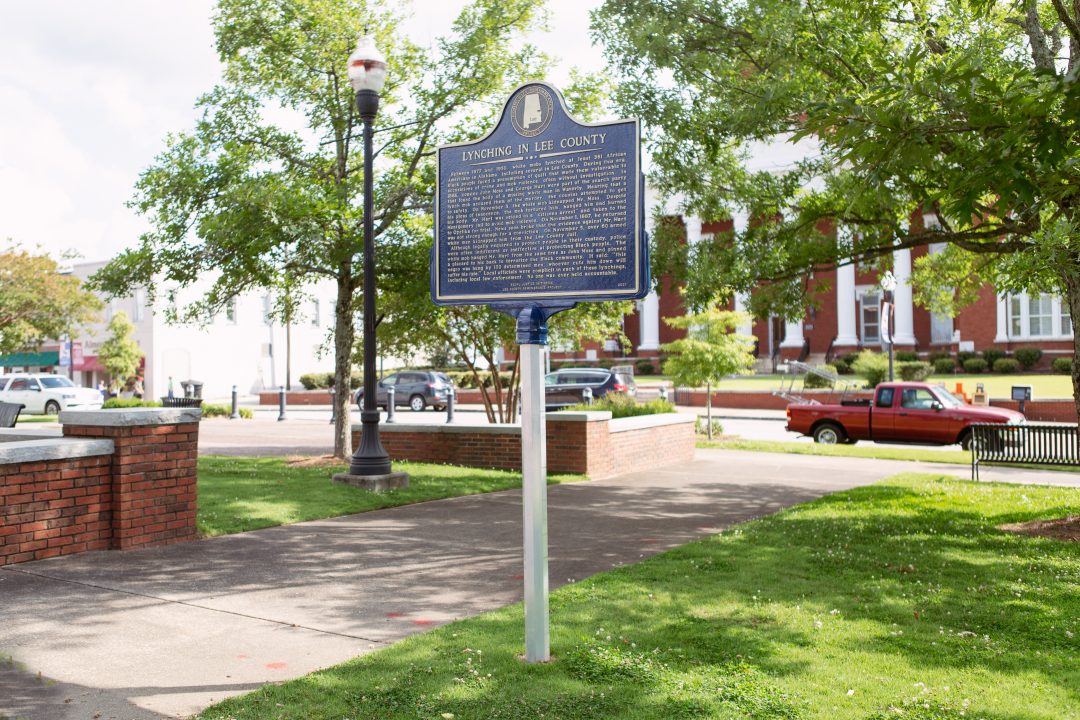CADC Faculty Assist Lee County Remembrance Project

On June 12, 2021, the Lee County Remembrance Project (LCRP) dedicated a historical marker in the Opelika Courthouse Square to honor five local men—George Hart, John Moss, Charles Humphries, Charles Miller and Samuel Harris—who were victims of racial terror lynching in the first half of the twentieth century. Several faculty members from Auburn’s College of Architecture, Design and Construction (CADC) collaborated with LCRP on different aspects of this project to commemorate racial violence and injustice in Lee County. LCRP is a grassroots organization that, following the guidance of the non-profit Equal Justice Initiative (EJI), works to confront and thereby overcome a history of racial terror in the county through a framework based on truth and reconciliation.
Program chair David Hill, along with fellow landscape architecture faculty members Rob Holmes and Emily Knox, worked with LCRP to help determine the site of the historical marker. Holmes said the trio had been following LCRP’s work for several years. “We had each been to EJI’s National Memorial for Peace and Justice in Montgomery several times, often with students,” he said. “EJI’s plan for having counties claim their markers is something we’ve both admired and thought was really important.” Hill, Holmes and Knox all served as members of LCRP’s historical marker committee, helping to study existing markers and monuments in Lee County and surveying possible locations before deciding on the Opelika Courthouse Square.
As part of a related LCRP project, Robert Finkel, chair of CADC’s graphic design program, worked with the organization to develop an exhibition at the Museum of East Alabama across the street from the courthouse square. Based on LCRP’s goals of “Educate, Commemorate and Advocate,” Finkel designed a display that features soil collected from each of the lynching sites in Lee County alongside archival news coverage of the murders, which shows how newspapers sensationalized the events. He built small pedestals for the soil jars and installed a large panel at the top of the display that contains an educational history of racial terror lynching in America, including QR codes that visitors can scan to learn about the victims. Finkel said that his goal in designing the exhibition was to educate museum guests while maintaining a respectful, somber and reflective tone.
For more information on the Lee County Remembrance Project, visit leecountryremembrance.org.
See more in:
AOI Archive, Faculty Collaboration
Related people:
David Hill, Rob Holmes, Emily Knox, Robert Finkel


